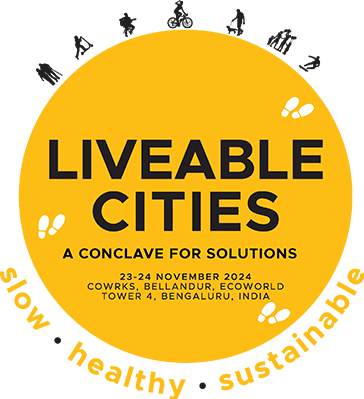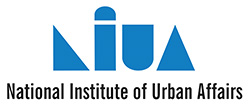THE Conclave THEME
Cities around the world are struggling to find a balance between ambitious growth and healthy productivity. Cities are increasingly vulnerable to climate-related hazards, demographic pressures and deteriorating public health, which are consequences of a development approach that relies on conspicuous consumption of resources, mindless production of waste and hastily constructed sub-standard buildings and public spaces. At COP26 in 2021, the Prime Minister of India called for the adoption of Mission LiFE (Lifestyles for Environment), a massive shift to environmental consciousness and rejection of energy-intensive and wasteful lifestyles. Mission LiFE seeks to transform all societies into pro-planet people. It requires a change of mindset, a discovery of new solutions for urban planning, design, technology and finance, and the rediscovery of solutions that existed in the past but have been abandoned. Mission LiFE advocates for change that starts with the individual – who is physically active, contributes to the creation of safe, clean, and vibrant neighbourhoods and adopts technologies that benefit all communities while protecting the environment. It calls for the creation of transformative pathways to a sustainable future.
The LIVEABLE CITIES - SLOW, HEALTHY, SUSTAINABLE Conclave aims to discover such pathways.
OBJECTIVE: MULTI SCALAR APPROACH
The aim is to thoroughly reinvigorate the imagination of the 21st-century Indian City by discovering pathways to planning, designing, and realizing four key transformations...
Transformation 1 : MOBILITY
Transformation 2 : PUBLIC HEALTH
Transformation 3 : TECHNOLOGY
Transformation 4 : COMMUNITY-NEIGHBOURHOOD
OBJECTIVE: FOCUS ON OUTCOMES
Transformation 1 :
MOBILITY

Slow mobility solutions like walking & cycling contribute to improved health and are environment friendly. However, if cities are dominated by automobiles and planned for speed, the desired changes in culture and behaviour are unlikely to happen. Making bicycles and walking the primary mobility choices for residents and investing in infrastructure that supports such lifestyles needs to be a priority in our cities. This will require a reversal or upturning of the dominant mode of planning and urban design for cities, which has speedy transportation at the top of a hierarchy in which the neighbourhood comes last. Slow mobility can be the building block for urban transportation, connecting seamlessly with intra-city and inter-city, non-polluting, multi-modal public transport networks and minimizing the need for ownership of private vehicles.
![]() How can the Indian city be retrofitted to prioritize slow mobility within a multi-modal hierarchy of transportation systems?
How can the Indian city be retrofitted to prioritize slow mobility within a multi-modal hierarchy of transportation systems?
Transformation 2 :
PUBLIC HEALTH

The pursuit of ever-increasing productivity and fast wealth-creation has exposed everyone to the stress of metropolitan life, high levels of air, water and noise pollution, and consumption of industrially mass-produced foods. India has been the font of traditional knowledge systems that encourage people to live with nature and be mindful while consuming necessities like food and clothing and making our habitats comfortable and beautiful. Urban planners and designers need to relearn the traditional knowledge and cultural wisdom for sustaining healthy lifestyles and countering the effects of stress and pollution. The pursuit of health and wellbeing requires a conducive built environment and access to green and open spaces, which can also be used to grow food and filter pollutants from the environment.
![]() How can the Indian city enable holistic health and wellbeing of individuals and communities?
How can the Indian city enable holistic health and wellbeing of individuals and communities?
Transformation 3 :
TECHNOLOGY

The development of sustainable, resilient, safe, and inclusive cities (SDG 11) is challenging for a country in which cities have been neglected for decades and are now expected to drive new economic activities and transitions to green growth. Digital and geospatial technologies and artificial intelligence promise to improve the delivery of urban infrastructure and make urban services demand responsive and user-friendly. However, energy-efficiency, circularity, and other means of achieving sustainability are hobbled by the dysfunctionality of legacy city systems coping with overload. Deficient planning and design affect the physical reality of urban life while also preventing future-ready technologies from being deployed at scale and producing impact.
![]() How can urban technologies improve accessibility, increase efficiency, induce shifts in public behaviour and enable demand-responsive infrastructure and services for our cities? How can we use Technology to mitigate climate change?
How can urban technologies improve accessibility, increase efficiency, induce shifts in public behaviour and enable demand-responsive infrastructure and services for our cities? How can we use Technology to mitigate climate change?
Transformation 4 :
COMMUNITY- NEIGHBOURHOOD

New models of living and working challenge our assumptions about fixed locations for residence New models of living and working challenge our assumptions about fixed locations for residence and employment. The COVID pandemic accelerated the disruption of conventional careers and modes of living and created the opportunity to embrace slow work, active lifestyles that are close to nature, family, and home. New concepts like the “15-minute city” are rediscovering the traditional link between habitat and local economic activity. It is increasingly apparent that the mental health of individuals and communities is related to the quality of their built environment and their access to homes, workplaces, shopping, entertainment, parks, schools, and healthcare facilities. People, especially children and the youth, the elderly and women, are seeking opportunities to live, work and learn in the same neighbourhood, while accessing social and cultural activities farther afield through ease of mobility- but these are producing gated communities, fragmenting the city itself. Mixed income communities, access to public amenities, local food forests are expected to change consumption patterns that in turn will produce cleaner environments and regenerate fragile ecologies, weaving sustainability into the fabric of the city.
![]() How can planners and urban designers create the slow neighbourhoods that are safe havens providing a salubrious mix of home, workplace, bazaars, parks, trades, arts & crafts, and culinary experiences?
How can planners and urban designers create the slow neighbourhoods that are safe havens providing a salubrious mix of home, workplace, bazaars, parks, trades, arts & crafts, and culinary experiences?
“LIVEABLE CITIES - SLOW, HEALTHY, SUSTAINABLE - A CONCLAVE FOR SOLUTIONS, 2024” WILL BE: A convening of purposeful discussions between experts, visionaries, investors, technologists, developers & builders, healthcare practitioners and community leaders. The two-day conclave will commence with a keynote session to introduce the main themes, followed by four thematic sessions and ending with a session to document the consensus that evolves through the two days.
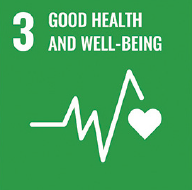
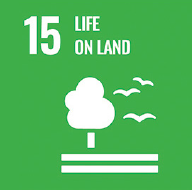
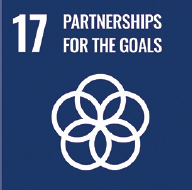

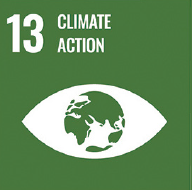
The Conclave addresses five Sustainable Development Goals (UN-SDGs)
Conclave
PROGRAM 
I. APPROACH
 Multi-scalar approach over a 2-day Conclave, eminent speakers, both Indian and International, will put forth their observations and share solutions from their experience
Multi-scalar approach over a 2-day Conclave, eminent speakers, both Indian and International, will put forth their observations and share solutions from their experience Working group roundtables that will create the manifesto
Working group roundtables that will create the manifesto An exhibition – demo space
An exhibition – demo space The end objective of the conclave would be to engage with all stakeholders and develop a manifesto on the solutions identified during the conference, and which will be handed over to the administrators and policy makers.
The end objective of the conclave would be to engage with all stakeholders and develop a manifesto on the solutions identified during the conference, and which will be handed over to the administrators and policy makers.
II. CONCLAVE REACH
 The target audience
The target audience  Representation from local government, bureaucrats, research and policy development
Representation from local government, bureaucrats, research and policy development Change makers, NGOs, Media
Change makers, NGOs, Media
 Mobility solution providers
Mobility solution providers Healthcare companies, medicos, Fitness and wearable technologies
Healthcare companies, medicos, Fitness and wearable technologies Infrastructure and Engineering cos.
Infrastructure and Engineering cos. Urban planning organisations
Urban planning organisations Developers with pan India presence
Developers with pan India presence Global and domestic academic institutions
Global and domestic academic institutions Interested General publics e.g. Cycling groups, Running groups,representative for Women & Children welfare, Elderly welfare
Interested General publics e.g. Cycling groups, Running groups,representative for Women & Children welfare, Elderly welfare
![]() Reach out to 100+ people at the Conclave, and more mass media reach through MyLiveableCity’s publications, social media and other media partners.
Reach out to 100+ people at the Conclave, and more mass media reach through MyLiveableCity’s publications, social media and other media partners.
In case of queries, please write to us at:
academy@myliveablecity.com

